Let's Go See How They Do It!
We read about this in our Huntington Library magazine (we are contribution members) so we thought "Yes, let's go".
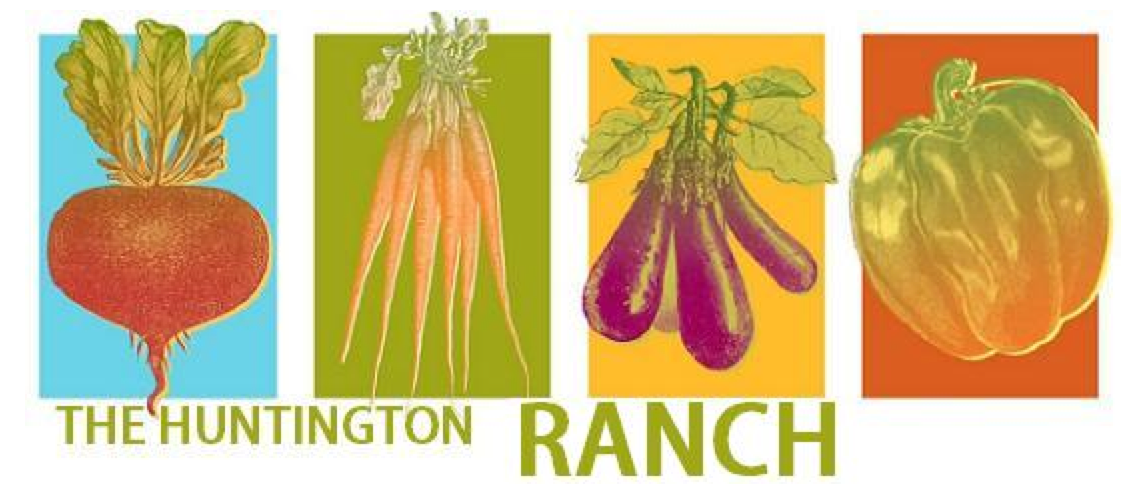
Did You Know? - When Henry Huntington purchased the estate known as the San Marino Ranch in 1903, hundreds of acres were planted with citrus, stone fruits, walnuts, and other commercial crops. Pushing the boundaries of agriculture in the region, Henry Huntington used the ranch to establish, among other things, what is believed to be the first commercial avocado grove in the state.
Did You Know? - In November 2010, The Huntington returned to its agricultural roots with the unveiling of a new project, called?fittingly?the Huntington Ranch. Part outdoor classroom, part demonstration garden, and part research lab, the Ranch is pushing new boundaries once again: this time on the frontier of sustainable urban agriculture.
The Ranch, perhaps surprisingly, was born in South Los Angeles. In 2006, when the South Central Farm closed amid controversy over the land, the growers saved banana, guava and dozens of other trees from being bulldozed. The Huntington agreed to store them temporarily.
We Walked From The Front Gate To The Ranch House Area

Sunflowers were magnificent
Did You Know? - The domesticated sunflower, Helianthus annuus, is the most familiar species. These are usually tall annuals, growing to a height of 50-390 or more cm. The rough and hairy stem is branched in the upper part in wild plants but is usually unbranched in domesticated cultivars. The petiolate leaves are dentate and often sticky. The lower leaves are opposite, ovate or often heart-shaped. The upper leaves are alternate and narrower.
They bear one or several to many wide, terminal capitula (flower heads), with bright yellow ray florets at the outside and yellow or maroon disc florets inside (several ornamental cultivars have recently become popular that have red-colored ray florets, all of these stem from a single original mutant ). These flower heads follow the direction of the sun, going from east to west during the day.

Attention!!!!

Courtesy of the Tiffany Sisters
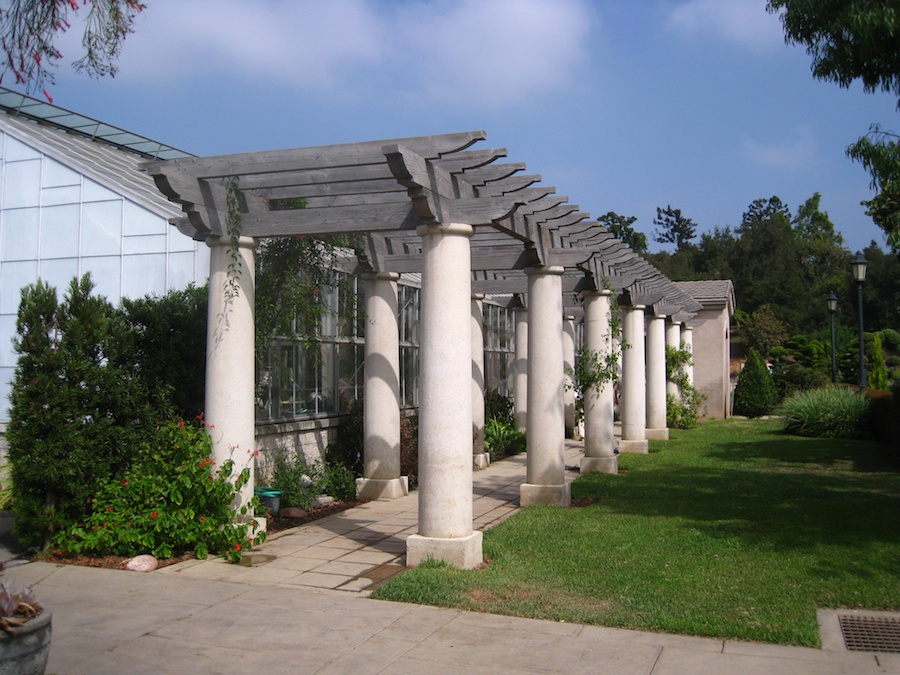
The arbor walkway in front of the Learning Greenhouse
Did You Know? - A greenhouse (also called a glasshouse) is a building in which plants are grown. These structures range in size from small sheds to very large buildings. A miniature greenhouse is known as a cold frame.
A greenhouse is a structure with different types of covering materials, such as a glass or plastic roof and frequently glass or plastic walls; it heats up because incoming visible solar radiation (for which the glass is transparent) from the sun is absorbed by plants, soil, and other things inside the building. Air warmed by the heat from hot interior surfaces is retained in the building by the roof and wall. In addition, the warmed structures and plants inside the greenhouse re-radiate some of their thermal energy in the infrared spectrum, to which glass is partly opaque, so some of this energy is also trapped inside the glasshouse.
However, this latter process is a minor player compared with the former (convective) process. Thus, the primary heating mechanism of a greenhouse is convection. This can be demonstrated by opening a small window near the roof of a greenhouse: the temperature drops considerably. This principle is the basis of the autovent automatic cooling system. Thus, the glass used for a greenhouse works as a barrier to air flow, and its effect is to trap energy within the greenhouse. The air that is warmed near the ground is prevented from rising indefinitely and flowing away.

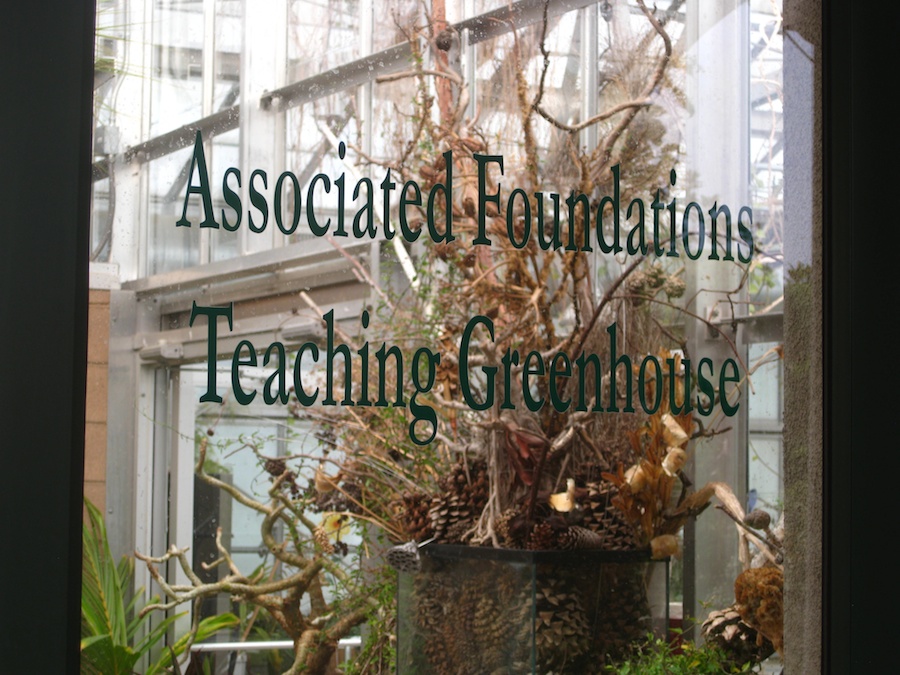
Neat place inside

How to make mulch...
Did You Know? - Mulching is a process of inbred fertilization which employs certain decomposed organic materials-- including, but not limited to animal sediment-- to blanket an area in which vegetation is desired. The procedure enriches the soil for stimulated plant development while, at the same time, preventing erosion and decreasing the evaporation of moisture from the ground.

Must keep the humidity high!
Bromelaids

Really???


Take a microscopic look see

Plant in a tree is called a what???
Did You Know? - An epiphyte is a plant that grows upon another plant (such as a tree) non-parasitically or sometimes upon some other object (such as a building or a telegraph wire), derives its moisture and nutrients from the air and rain and sometimes from debris accumulating around it, and is found in the temperate zone (e.g., many mosses, liverworts, lichens and algae) or in the tropics (e.g., many ferns, cacti, orchids, and bromeliads).
We Arrive At "The Ranch" Area.... Adjacent To The Conservatory
Did You Know? - Located on 15 undeveloped acres northwest of the Botanical Center, the Ranch features a sprawling outdoor station, complete with vegetable garden, that will serve as both an open-air classroom and a demonstration site for innovative ideas. The site also encompasses the surviving orange groves from Mr. Huntington?s day and a new heritage grove of avocados (planted by the California Avocado Society) representing? the 32 most significant varieties in the state?s agricultural history.

Do NOT walk any place but the paths

Neat tool shed

Everything is fed via small pipes
laid in the ground
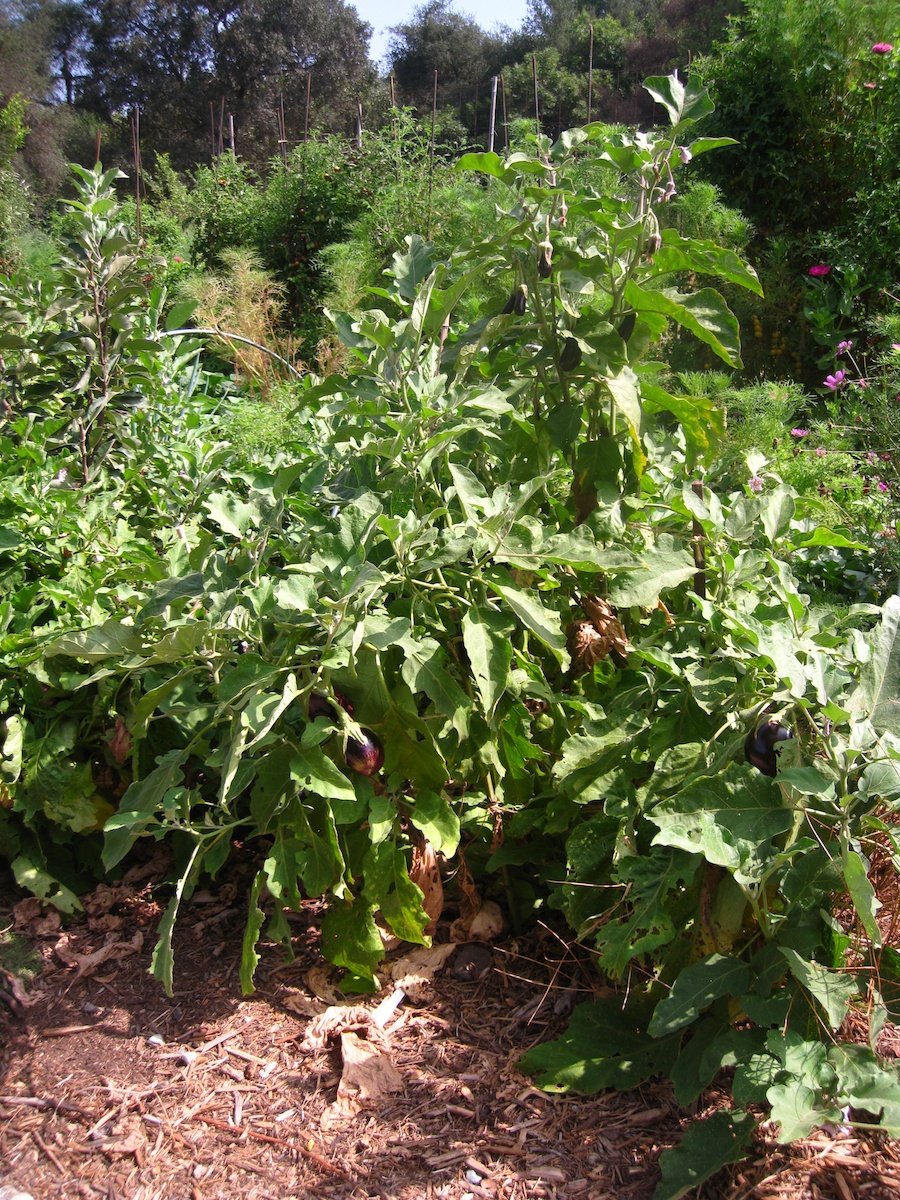
Beautiful eggplants
... These were striped with while and purple

The tree trunks are painted white to protect them from the summer sun
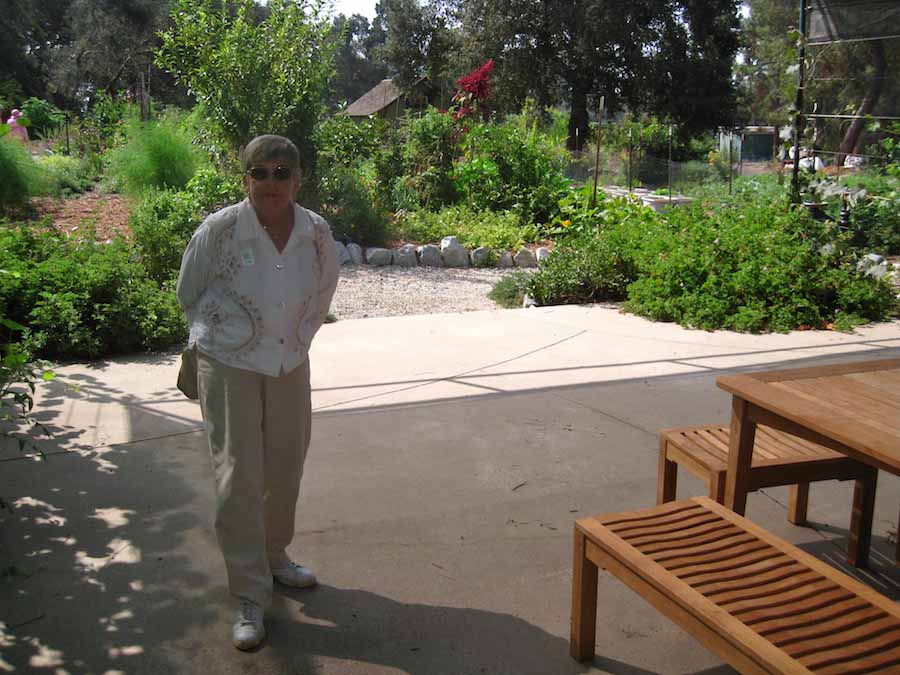
The grape arbor was a nice place to stop and rest
Did You Know? - A pergola, arbor or arbour is a garden feature forming a shaded walkway, passageway or sitting area of vertical posts or pillars that usually support cross-beams and a sturdy open lattice, often upon which woody vines are trained. As a type of gazebo, it may also be an extension of a building, or serve as protection for an open terrace or a link between pavilions.

The professor points out the Australian Limes - Notice how be blends in to the surroundings
Did You Know? - The Finger Lime plant, Citrus australasica (syn. Microcitrus australasica) is a thorny understorey shrub or small tree of lowland subtropical rainforest and dry rainforest in the coastal border region of Queensland and New South Wales, Australia.
The plant is 2-7 metres in height. Leaves are small, 1-6 cm long and 3-25 mm wide, glabrous, with a notched tip and crenate towards the apex. Flowers are white with petals 6-9 mm long. The fruit is cylindrical, 4-8 cm long, sometimes slightly curved, coming in different colours, including pink and green.

Amazing.... Two trunks
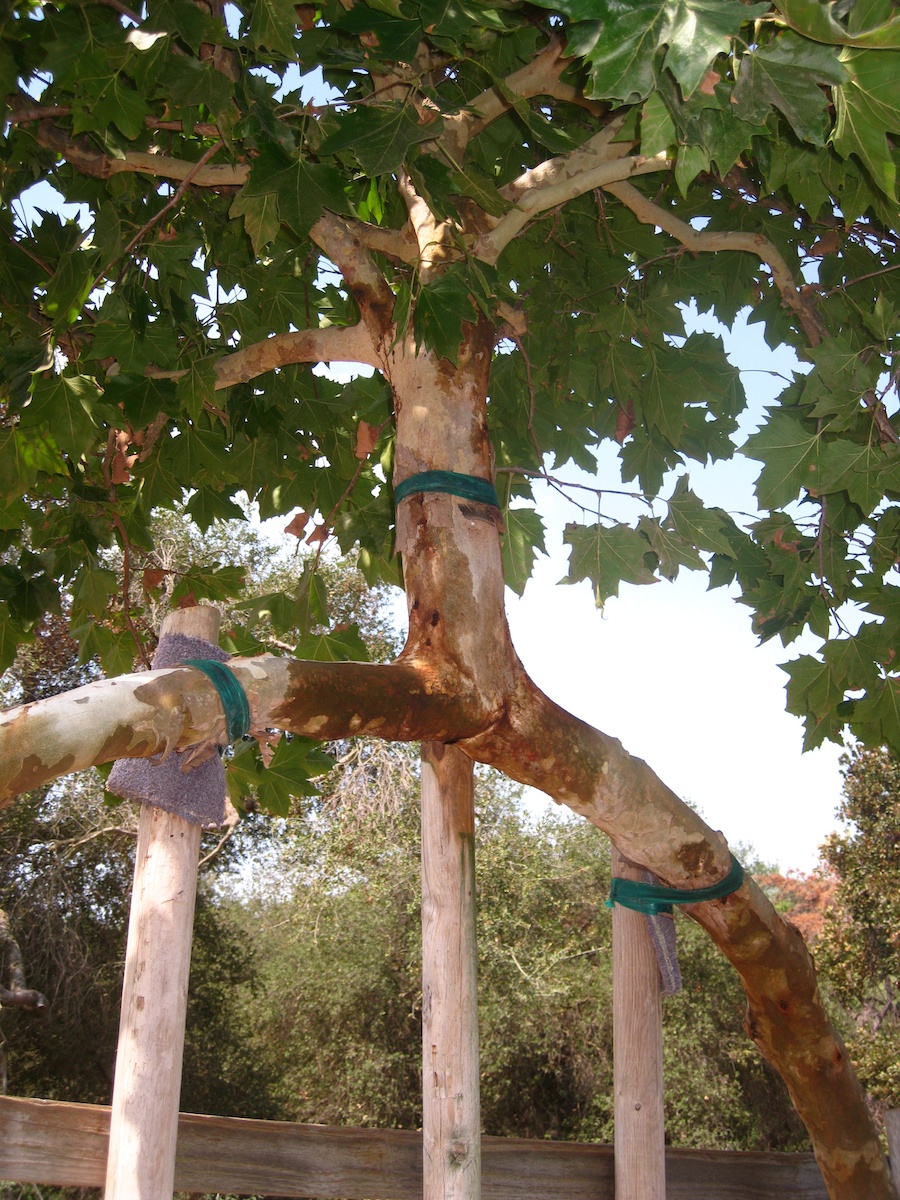
Up close.... Why the supports? Read below...
Did You Know? - Grafting or graftage is a horticultural technique whereby tissues from one plant are inserted into those of another so that the two sets of vascular tissues may join together. This vascular joining is called inosculation. The technique is most commonly used in asexual propagation of commercially grown plants for the horticultural and agricultural trades.
In most cases, one plant is selected for its roots and this is called the stock or rootstock. The other plant is selected for its stems, leaves, flowers, or fruits and is called the scion or cion. The scion contains the desired genes to be duplicated in future production by the stock/scion plant.
In stem grafting, a common grafting method, a shoot of a selected, desired plant cultivar is grafted onto the stock of another type. In another common form called bud grafting, a dormant side bud is grafted onto the stem of another stock plant, and when it has inosculated successfully, it is encouraged to grow by pruning off the stem of the stock plant just above the newly grafted bud.
For successful grafting to take place, the vascular cambium tissues of the stock and scion plants must be placed in contact with each other. Both tissues must be kept alive until the graft has 'taken', usually a period of a few weeks. Successful grafting only requires that a vascular connection take place between the grafted tissues. Joints formed by grafting are not as strong as naturally formed joints, so a physical weak point often still occurs at the graft, because only the newly formed tissues inosculate with each other. The existing structural tissue (or wood) of the stock plant does not fuse.
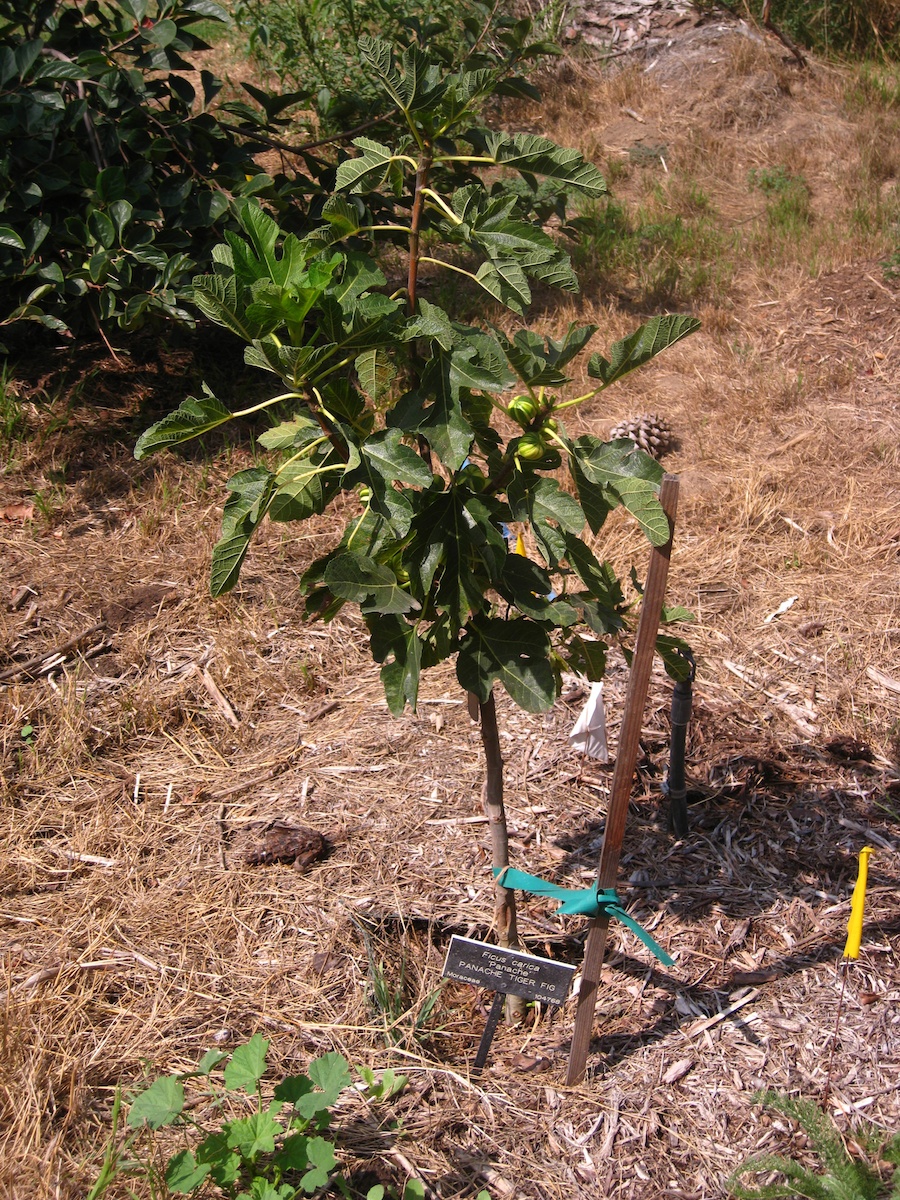
We have one of these.... A variegated fig
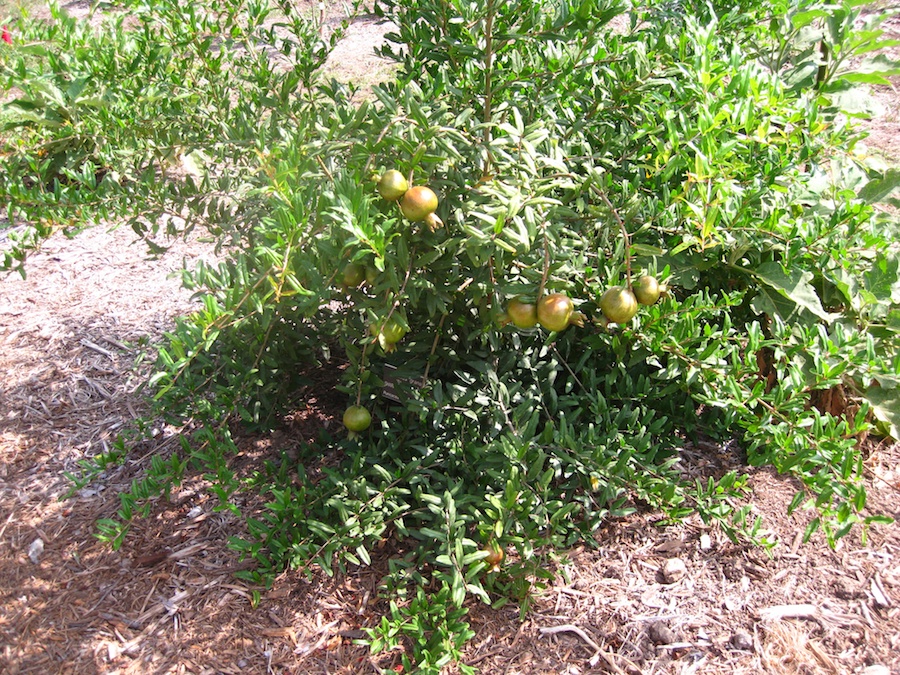
Pomegranate were everywhere.... Many kinds


They had some really interesting fruits in the garden!
Did You Know? - The name pomegranate derives from medieval Latin p?mum "apple" and gr?n?tum "seeded". This has influenced the common name for pomegranate in many languages (e.g. Granatapfel or Grenadine in German, grenade in French, pomogran? in venetian). M?lum gr?n?tus, using the classical Latin word for apple, gives rise to the Italian name melograno, or less commonly melagrana.
Perhaps stemming from the old French word for the fruit, pomme-grenade, the pomegranate was known in early English as "apple of Grenada"?a term which today survives only in heraldic blazons. This is a folk etymology, confusing Latin granatus with the name of the Spanish city of Granada, which derives from Arabic.

Great walking paths in the garden

The tool shed was a common focus

White garlic chives
Did You Know? - Garlic chives, Allium tuberosum, (also known as kow choi ) is a vegetable related to onion. It is also sometimes called "green Nira grass" where "Nira" is Romanization of the Japanese word "??" which means garlic chives.
The plant has a distinctive growth habit with strap-shaped leaves unlike either onion or garlic, and straight thin white-flowering stalks that are much taller than the leaves. The flavor is more like garlic than chives. It grows in slowly expanding perennial clumps, but also readily sprouts from seed. Besides its use as vegetable, it also has attractive flowers.
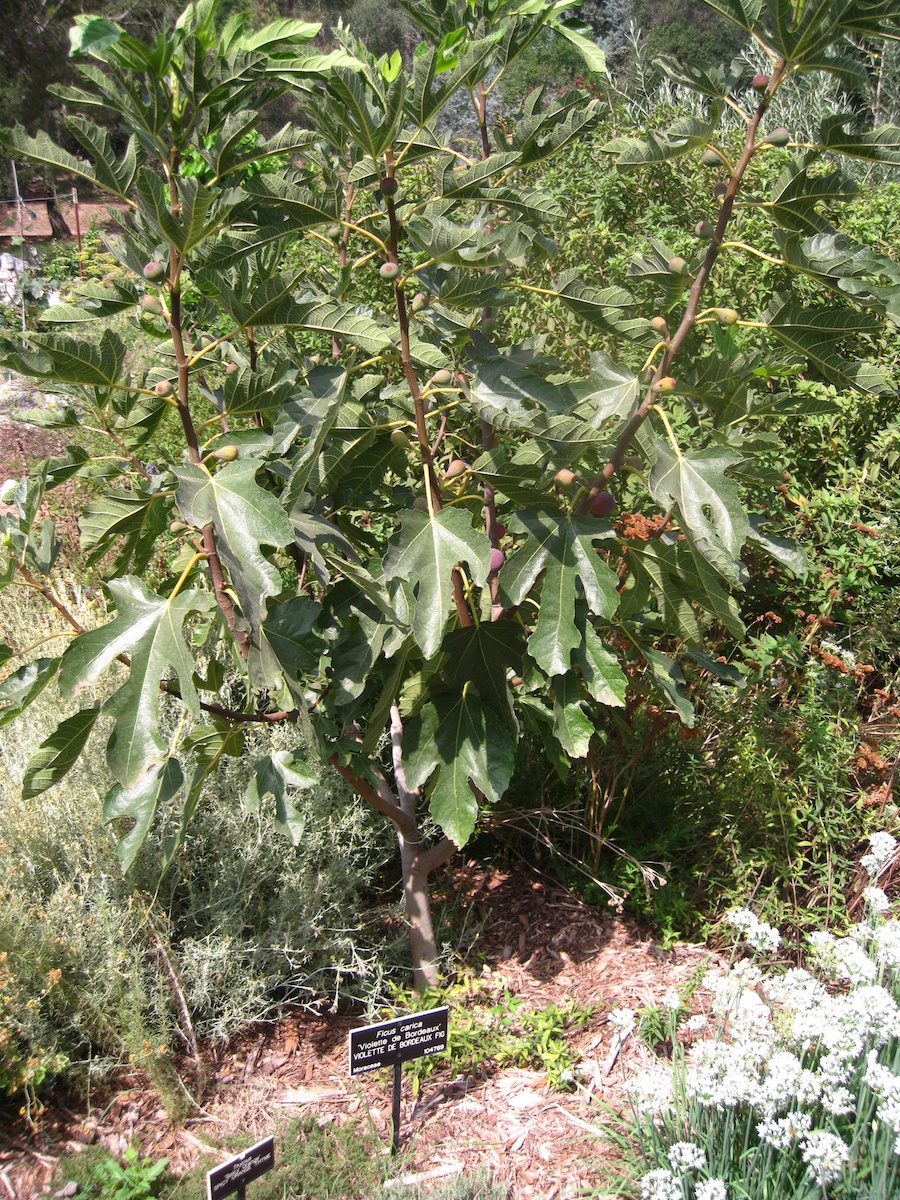
They looked very healthy

Very punny

Jujubee... Not the candy!
Did You Know? - American jujubes are a type of starch, gum and corn syrup based candy drops originally produced by the Heide Candy Company. The product was sold to The Hershey Company, and then to the current owner, Farley & Sathers. They are much stiffer than their relatives (e.g. Jujyfruits).
Jujubes are a traditional western candy that first existed in the late 19th century and early 20th century. The candy came to prominence in the mid-20th century. As with most candies of this era, although jujubes are sweet in taste and generally colorful, they do not have the strong and distinctive flavor of modern candies due to the expense of chemical flavorants at the time. Jello produced during the same time period also exhibits a similar lack of coordination between color and flavor.
The manufacturer's website states that "Jujubes, known for their hard, break-glass quality texture, began production in 1920. Original flavors included lilac, violet, rose, spearmint, and lemon. Rose and spearmint have been changed to cherry and lime, as a result of flavor availability." Thus, the current flavor lineup is lemon (yellow), lilac (orange), lime (green), cherry (red), and violet (purple).
Did You Know? - The freshly harvested as well as the candied dried fruits are often eaten as a snack, or with tea. They are available in either red or black (called h?ng z?o or h?i z?o, respectively, in Chinese), the latter being smoked to enhance their flavor. In China and Korea, a sweetened tea syrup containing jujube fruits is available in glass jars, and canned jujube tea or jujube tea in the form of teabags is also available. Although not widely available, jujube juice and jujube vinegar (called ?? or ??? in Chinese) are also produced; they are used for making pickles (????? ????) in West Bengal and Bangladesh.

More eggplant.... Showing Mother Natures paint brush in action

Clever... Want to keep opossums away from your watermelons... Get a milk crate
Did You Know? - Milk crates are square or rectangular interlocking boxes that are used to transport milk and other products from dairies to retail establishments. Middle 20th century ones were made of wood, later ones were stainless steel, and those made in the latter part of the century were of heavy-duty polyethylene. In Europe the term "bottle crate" is more common but in the United States the term "milk crate" is applied even when the transported beverage is not milk.
Milk crates are often stolen for either personal or business use or for the plastic that they are made out of. Theft of milk crates can cost dairies millions of US dollars per year. This has led at least one dairy farm to hire a private investigator to discover what is happening to the crates ; the results of investigations point to plastic re-sellers being the culprits in the majority of thefts.

Neat plants.... Anaheim peppers
Did You Know? -
An Anaheim pepper is a mild variety of chili pepper. The name "Anaheim" derives from a farmer named Emilio Ortega who brought the seeds to the Anaheim, California, area in the early 1900s. They are also called California chili or Magdalena, and dried as chile seco del norte. Since Anaheim peppers originated from New Mexico, they are also sometimes known as New Mexico peppers. Additionally, in New Mexico they are often referred to simply as "chiles" because they are so ubiquitous. Varieties of the pepper grown in New Mexico tend to be hotter than those grown in California.
Dried Anaheim chili peppers
The chile "heat" of Anaheims typically ranges from 500 to 2,500 on the Scoville scale however, many varieties grown in New Mexico can reach 4,500 to 5,000 Scoville units.
 Cactus for lunch anyone? NOTE: The red flag is the sign for a varmint trap... Looking for a gopher it looks like
Cactus for lunch anyone? NOTE: The red flag is the sign for a varmint trap... Looking for a gopher it looks like
Did You Know? - Almost any fleshy cactus fruit is edible. The word pitaya or pitahaya (usually considered to have been taken into Spanish from Haitian creole) can be applied to a range of "scaly fruit", particularly those of columnar cacti. The fruit of the saguaro (Carnegiea gigantea) has long been important to the indigenous peoples of northwestern Mexico and the southwestern United States, including the Sonoran Desert.
It can be preserved by boiling to produce syrup and by drying. The syrup can also be fermented to produce an alcoholic drink. Fruits of Stenocereus species have also been important food sources in similar parts of North America; Stenocereus queretaroensis is cultivated for its fruit.
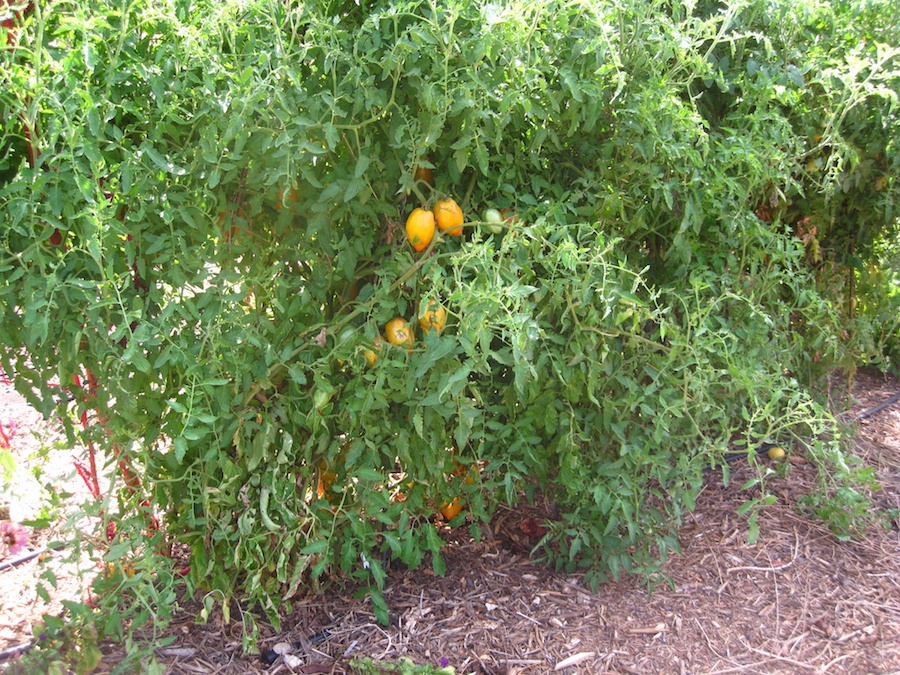
Weird shaped tomatoes

A closer investigation is warranted

Yes... We can grow these....

The area is quite large.... Lots of work for the caretakers
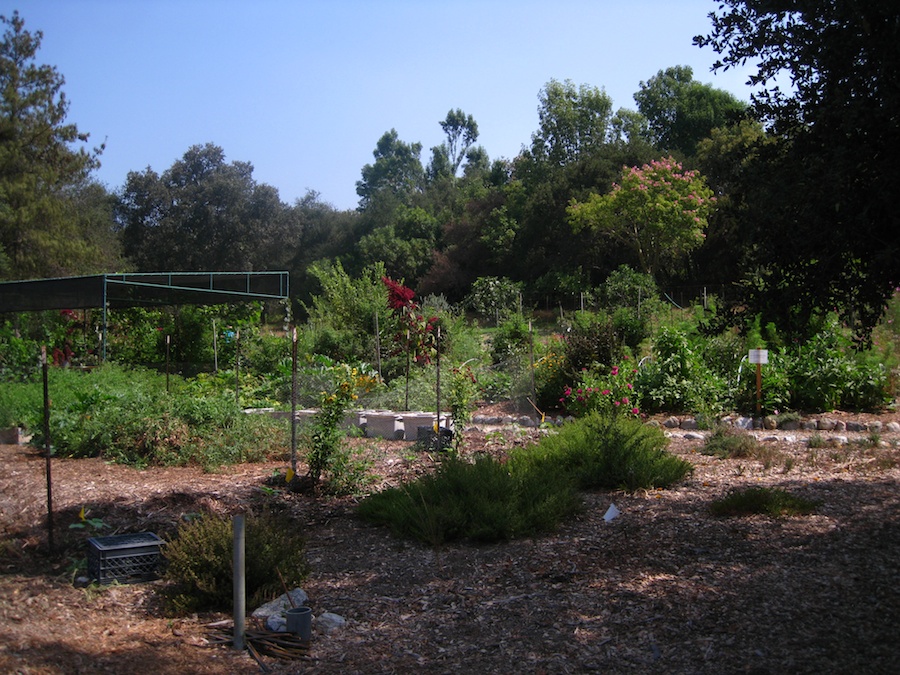
Over the hill is the Chinese garden
Did You Know? - Today, the Ranch includes eight acres from the original orange grove and 63 avocado trees (32 significant varieties), chosen by the California Avocado Society.
There's a 1,200-square-foot section of vegetables (cabbage, cauliflower, garlic and more) planted in rows, and spots where gardens are laid out in ways that might work in front or back yards, including raised beds. A space for demonstrations and lectures eventually will have sinks and counters.
And though not many Angelenos have the space for such a thing, a "food forest" is perhaps the most unusual idea being explored at the Ranch.
Across the Ranch, dozens of kinds of food are growing: herbs, greens and other vegetables; fruit trees, including fig, apple, persimmon and stone fruit. In one hole there are four peach trees -- one early, two midseason and one late-producing type -- increasing the potential for months of pie.
"There are so many strategies if you are interesting in growing some of your food," says Kleinrock, who grew up in Van Nuys and became interested in growing food after studying design and landscape architecture.
For example, many people tear out their lawns and plant food, but what happens when the grower has a busy time at work or a sick relative who requires prolonged attention, and the garden goes untended and the neighbors grow angry. So he is looking at ways to grow food that requires less attention and creates happier neighbors. One way: Make sure it's clear the yard is being tended with paths, a fence or a border.
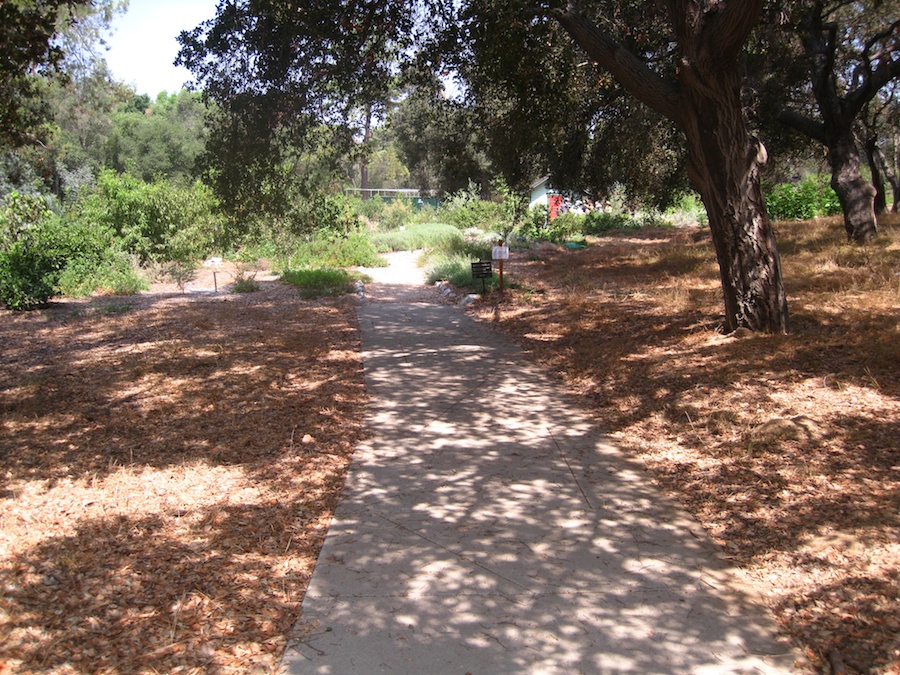
The path goes under some great trees... Provides cools shade
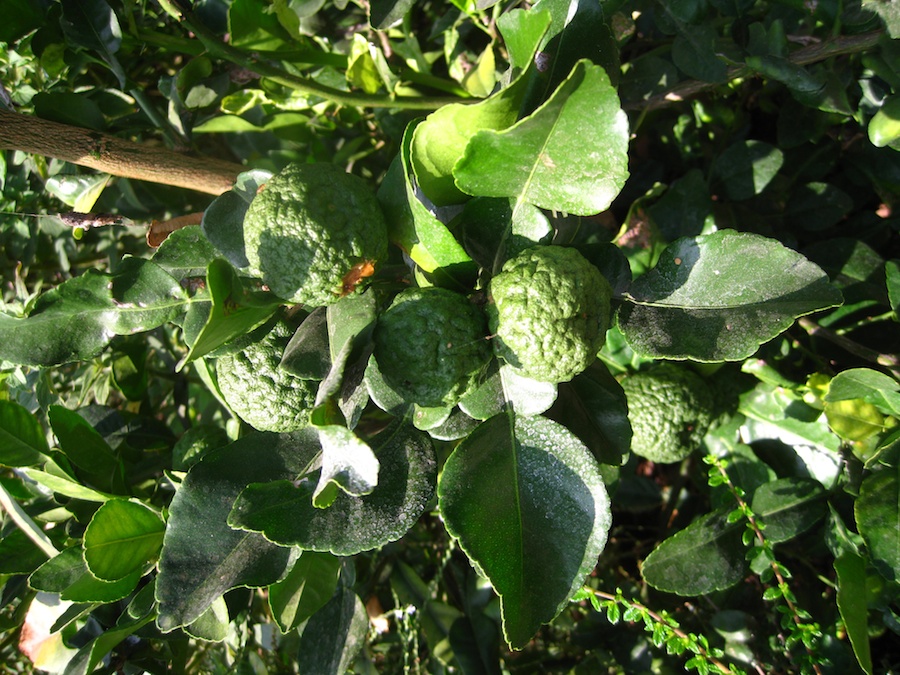
Australian Limes
Did You Know? - Round lime (Citrus australis), also known as Australian lime or Australian round lime, is a large shrub or small tree of a height of up to 12m. It grows in the Beenleigh area, Queensland, Australia.

This lime has a few more wrinkles than Paul
Off To The Chinese Garden Via The "No Visitors Route!"

Here we go....

So... That is what is beneath a fire hydrant
Did You Know? - A fire hydrant (also known colloquially as a fire plug in the United States or as a johnny pump in New York City, because the firemen of the late 19th century were called Johnnies), is an active fire protection measure, and a source of water provided in most urban, suburban and rural areas with municipal water service to enable firefighters to tap into the municipal water supply to assist in extinguishing a fire. Buildings near a hydrant may qualify for an insurance discount since firefighters should be able to more rapidly extinguish a fire on the insured property.
The concept of fire plugs dates to at least the 17th century. This was a time when firefighters responding to a call would dig down to the wooden water mains and hastily bore a hole to secure water to fight fires. The water would fill the hole creating a temporary well, and be transported from the well to the fire by bucket brigades or, later, by hand-pumped fire engines. The holes were then plugged with stoppers, normally redwood, which over time came to be known as fire plugs. The location of the plug would often be recorded or marked so that it could be reused in future fires. This is the source of the colloquial term fire plug still used for fire hydrants today. After the Great Fire of London in 1666, the city installed water mains with holes drilled at intervals, equipped with risers, allowing an access point to the wooden fire plugs from street level.
The invention of a post- or pillar-type fire hydrant is generally credited to Frederick Graff Sr., Chief Engineer of the Philadelphia Water Works around the year 1801. It had a combination hose/faucet outlet and was of "wet barrel" design with the valve in the top. It is said that Graff held the first patent for a fire hydrant, but this cannot be verified because the patent office in Washington D.C. caught on fire in 1836 destroying many patent records from that period in the process. In 1863, Birdsill Holly invented the modern version of the fire hydrant. While Holly was only one of many involved in the development of the fire hydrant, innovations he introduced are largely responsible for the fire hydrant taken for granted today. In 1869, Holly was issued U.S. patent #94749, for an "improved fire hydrant".
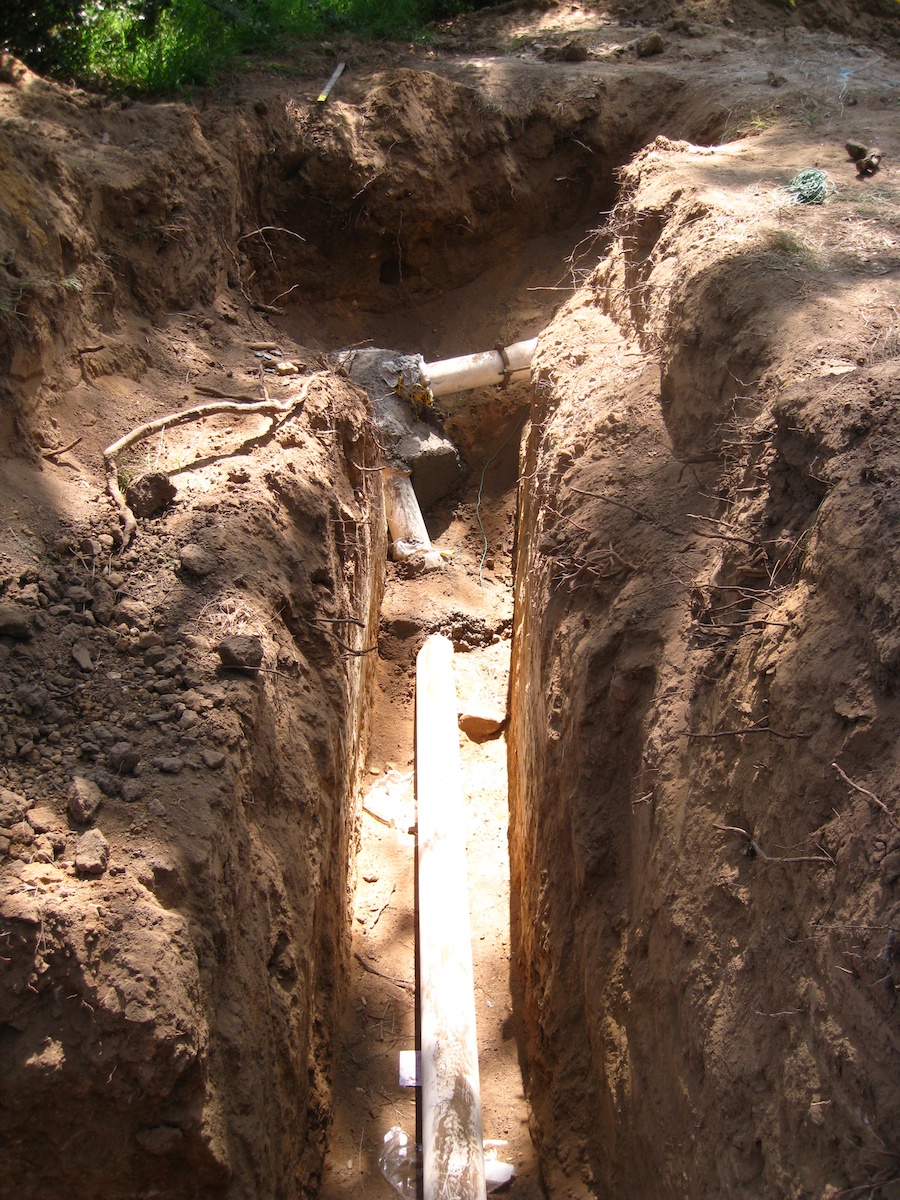
Large pipes being laid for the new harden

New Chinese rocks for the expanded Chinese garden

The crates have Chinese markings on them
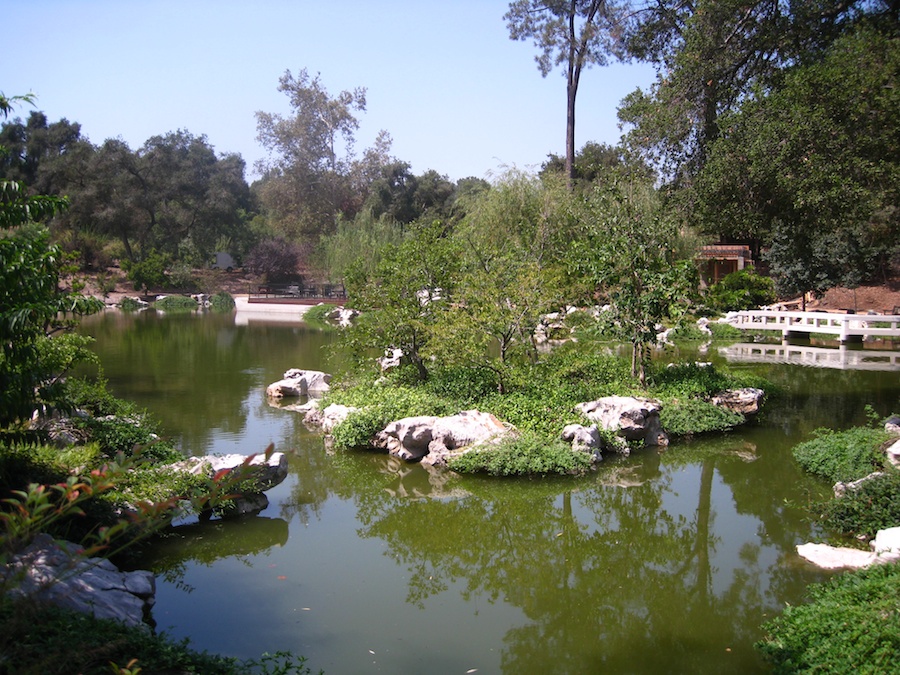
We made it.... And we were not stopped
(Same rocks as above pictures)

Amazing water lily

Very relaxing
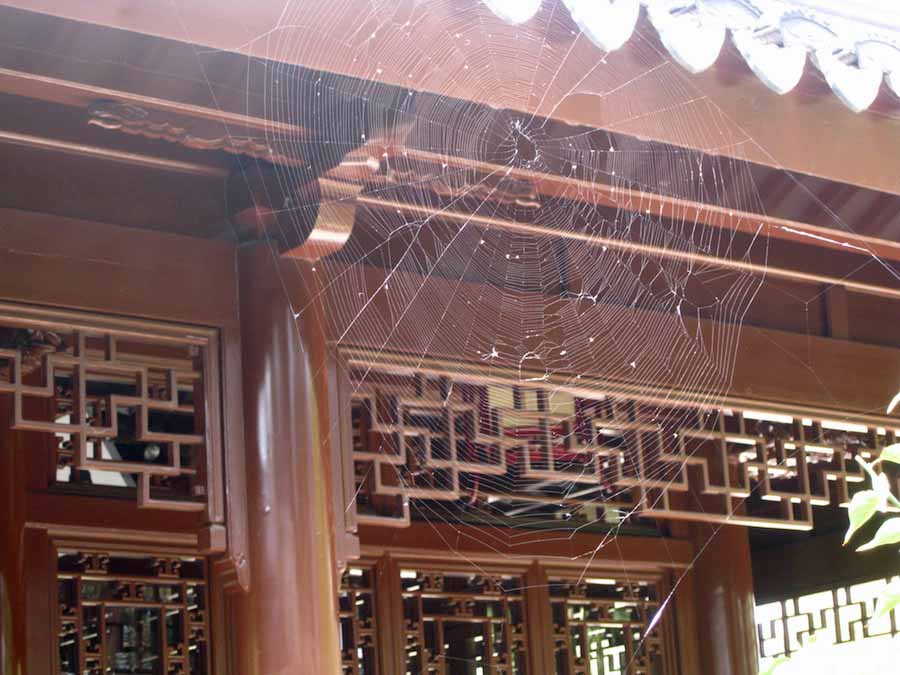
Mr. Spiddy likes the garden also
Did You Know? - A spider web, spiderweb, spider's web or cobweb (from the obsolete word coppe, meaning "spider") is a device built by a spider out of proteinaceous spider silk extruded from its spinnerets.
Webs allow a spider to catch prey without having to expend energy by running it down. Thus it is an efficient method of gathering food. However, constructing the web is in itself an energetically costly process because of the large amount of protein required, in the form of silk. In addition, after a time the silk will lose its stickiness and thus become inefficient at capturing prey. It is common for spiders to eat their own web daily to recoup some of the energy used in spinning. The silk proteins are thus recycled.
The Japanese Garden House

Patterned after a 1870's home

The "Shakespeare Garden"